
Fascinating Facts About Amur Leopards – The Best 65
Facts About Amur Leopards
Amid the vastness of the Earth’s diverse wildlife, the Amur leopard, Panthera pardus orientalis, stands out as a testament to the beauty and resilience of nature. But native to the dense temperate forests of the Russian Far East and northeastern China, this leopard species has faced numerous challenges, pushing it to the brink of extinction. From habitat loss due to human interference and forest fires to the changing climate patterns affecting its prey species, the fight for survival has never been more challenging for this leopard. But what makes the Amur leopard truly special, and why should we care? This article delves into the captivating facts about Amur leopards and the crucial role they play in the ecosystem.
A Unique Subspecies with a Rich Heritage
- Subspecies of Leopard: Firstly, the Amur leopard is a distinct subspecies of the leopard. Though they share a genetic lineage with other leopard species, they have adapted uniquely to their cold climate. Hence their thick coat, which can grow up to 7 cm long in winter months, and longer legs, help them navigate the deep snow of their habitat.
- Common Name Confusions: While the common name “Amur leopard” is widespread, they’re also known by other names such as the Korean leopard, Far Eastern leopard, and Manchurian leopard. In fact each name is a testament to the regions they’ve historically inhabited or the characteristics they possess.
- Distinguishing Features: Their thick fur, adorned with black spots, is not just for show. Those tiny hooks on their fur provide insulation during cold winters, while the pattern of spots helps in camouflage during hunting trails in the early summer.
Facts About Amur Leopards

A Diminishing Territory: The Habitat Challenges
- Habitat Loss: The greatest threat facing the Amur leopard today is habitat loss. Hence activities like logging, construction of oil pipelines, and human populations expanding into the leopard’s natural habitat are driving these cats to smaller and fragmented regions, leading to habitat fragmentation.
- Forest Fires and Their Impact: Forest fires, often resulting from human interference or natural causes, have ravaged vast square miles of the Amur leopard habitat. This not only reduces their territory but affects their prey species like the sika deer and wild boar.
- Geographical Spread: Historically, Amur leopards roamed freely across the Korean Peninsula, northern China, and parts of the Russian Far East, including the Primorsky Krai region near the Chinese border. But today, the largest wild population is found mainly in the Land of the Leopard National Park in the Russian Far East.
Dietary Preferences and Hunting Patterns
- Diverse Palate: Amur leopards have a varied diet that includes sika deer, wild boar, Siberian roe deer, wild pig, and even young Eurasian black bears. Also their role as apex predators ensures a balanced ecosystem, controlling the populations of these prey species.
- Hunting in Deep Snow: Adapted to their environment, Amur leopards have developed longer legs, enabling them to hunt effectively even in deep snow. Their thick coat provides insulation while their keen senses help them track down prey.
Fact Source: World Wildlife Fund (WWF). “Amur leopard population in the wild.” WWF, 2022.
Facts About Amur Leopards

The Fight for Survival: Conservation Efforts and Challenges
- On the Brink of Extinction: The Amur leopard is one of the world’s rarest big cats. Due to multiple threats ranging from habitat fragmentation to poaching, their numbers dwindled dangerously in the wild. As per the International Union for Conservation of Nature (IUCN) Red List, they are classified as critically endangered.
- Land of the Leopard National Park: Indeed, recognizing the dire need for conservation, the Russian government established the “Land of the Leopard National Park” in the Primorsky Krai region. Hence spanning several football fields in size, this park provides a sanctuary for these majestic creatures, protecting them from poaching and allowing a safe haven for breeding.
- Collaboration with Western Conservation Organisations: Efforts to conserve the Amur leopard are not isolated. In fact international bodies, including the World Wildlife Fund and the Tiger Alliance, collaborate with local governments and communities. Furthermore their joint efforts include monitoring populations, anti-poaching initiatives, and habitat restoration.
- Importance of Genetic Diversity: But with such a small population, one of the main threats to the Amur leopard’s survival is the loss of genetic diversity. Indeed conservationists are hard at work trying to ensure that the breeding population remains diverse to prevent inbreeding and the associated health complications.
Facts About Amur Leopards
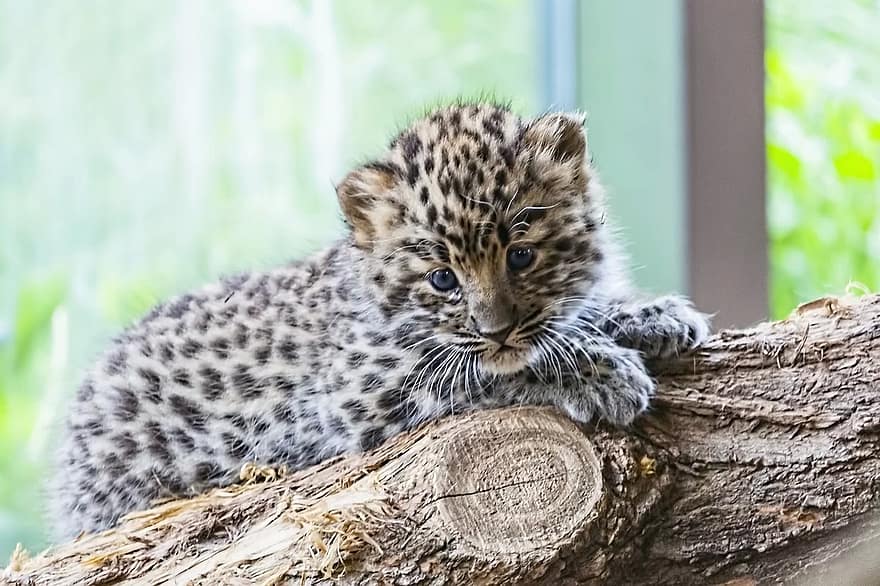
Breeding and Lifecycle of the Amur Leopard
- Mating Season: Come winter months, the breeding season for Amur leopards begins. In fact female Amur leopards signal their readiness to mate with distinctive vocalizations and scent markings.
- Gestation and Cubs: The gestation period for these leopards is around 12 weeks. Female leopards typically give birth to 1-4 cubs, though 2 is most common. These Amur leopard cubs, vulnerable in their early days, remain hidden for up to two months before venturing out.
- Path to Adulthood: By 1.5 to 2 years of age, these cubs reach sexual maturity. However, they tend to stay with their mothers for learning and protection till they’re about 2 years old. After which, they venture out to establish their territories.
Human-Animal Conflict and its Consequences
- Encroachments and Threats: The expansion of human populations into the leopard’s territories in northeastern China, North Korea, and the Korean Peninsula leads to inevitable conflicts. Loss of habitat due to agriculture and infrastructural development poses a direct threat to their survival.
- Local Villagers and Leopard Interactions: As the leopards’ habitats shrink, they often venture closer to human settlements in search of food. But this can lead to them preying on livestock, sparking animosity among local villagers. Therefore conservationists work closely with local communities to develop understanding and mitigate such conflicts.
- Oil Pipelines and Infrastructure: The construction of oil pipelines and other infrastructures in the Amur leopard habitat not only reduces their roaming space but can lead to direct fatalities. However efforts are in place to create wildlife corridors that allow safe passage for these leopards.
Facts About Amur Leopards
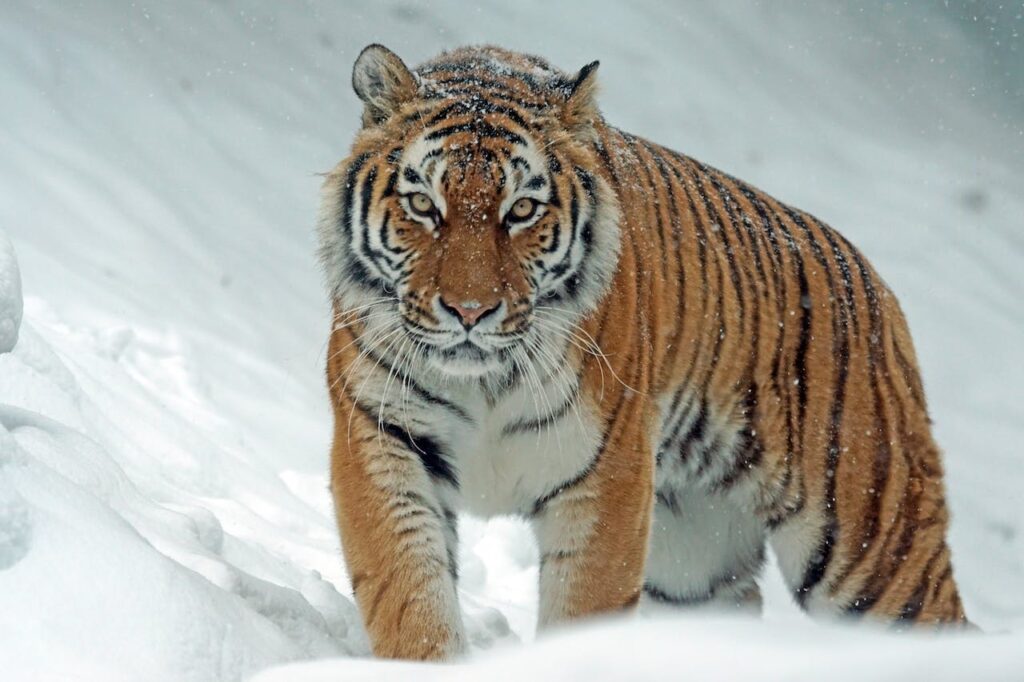
Amur Leopards vs. Amur Tigers: Distinct Yet Intertwined Destinies
- Coexistence in the Far East: The Amur leopard is not the only majestic big cat in the Russian Far East. The region is also home to the equally endangered Amur tigers. Both these species share habitats and face similar threats, from habitat loss to poaching.
- Conservation Synergy: Conservation efforts for the Amur leopard often benefit the Amur tiger and vice versa. Therefore the establishment of protected areas and anti-poaching initiatives assist both these magnificent creatures in their fight for survival.
Fact Source: International Union for Conservation of Nature (IUCN). “Conservation status of Amur leopards.” IUCN, 2022.
The Magnificent Coat: Adaptations and Features
- A Thick Barrier: One of the most distinguishing features of the Amur leopard is its thick coat. In fact in the frigid winter months of northeastern Asia, this coat can grow up to three inches thick. Consequently this acts as a crucial insulating layer, protecting them from the cold climate.
- Black Spots and Rosettes: Apart from providing insulation, the leopard’s coat offers excellent camouflage. As a result the beautiful pattern of black spots and rosettes on a golden-yellow background blends seamlessly with the temperate forests’ foliage, aiding them in their stealthy hunts.
- Longer Legs, Bigger Leap: While all leopards are known for their agility, the Amur leopard’s longer legs, an adaptation to navigate deep snow, give it an advantage in chasing prey in its cold habitat.
Their Precarious Diet and Hunting Tactics
- Main Prey Species:
- Sika Deer: A primary source of food for the leopards.
- Wild Boar: Often hunted in the forest undergrowth.
- Siberian Roe Deer: Another significant prey species.
- Hunting at Night: Like most leopards, the Amur leopard is a nocturnal creature. Their eyes are adapted to see in low light, giving them an edge during their nighttime hunts.
- Stalking and Ambushing: Using their thick coat for camouflage, these leopards are experts at stalking their prey silently, often ambushing them with a sudden burst of speed.
Facts About Amur Leopards
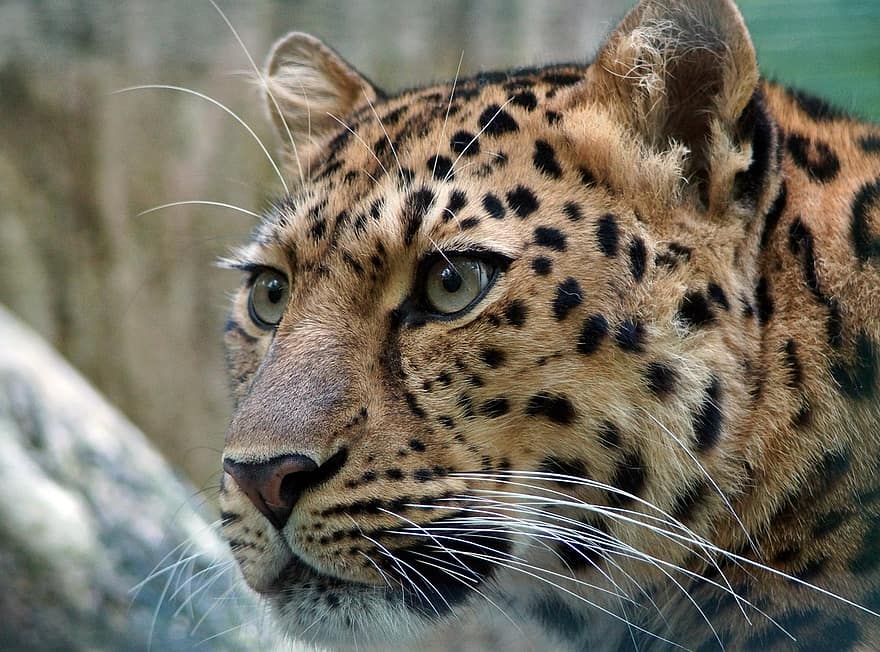
The Role of International Bodies and Governments
- World Wildlife Fund (WWF): The WWF has been instrumental in shining a spotlight on the plight of the Amur leopard. In fact their funding and resources have aided in setting up monitoring stations, initiating community outreach programs, and driving international awareness.
- International Union for Conservation of Nature (IUCN): The IUCN’s Red List acts as a global indicator of species health. Their classification of the Amur leopard as critically endangered has driven international conservation efforts and policy-making.
- Russian and Chinese Governments: Both governments have recognized the importance of conserving this rare subspecies of leopard. The establishment of national parks, wildlife corridors, and stricter anti-poaching laws are steps in the right direction.
Threats Beyond Human Control: Climate Change and Its Impact
- Changing Prey Patterns: As global temperatures rise, the habitats of many of the Amur leopard’s prey species are undergoing shifts. This affects the leopard’s hunting patterns and, in some cases, their dietary sources.
- Forest Fires: An increase in temperatures and changing weather patterns in the Russian Far East and northeastern China has led to an uptick in forest fires, devastating the natural habitat of these leopards.
- Impact on Breeding: Changes in temperature and environmental conditions can influence the breeding patterns and the survival rates of the Amur leopard cubs.
Facts About Amur Leopards

A Beacon of Hope: Success Stories
- Growing Numbers: Thanks to conservation efforts, there has been a slow yet steady increase in the Amur leopard population. From numbers as low as 30 in the wild a few decades ago, recent estimates indicate a population closer to 100.
- Community Involvement: In areas near the Chinese border and Primorsky Krai, local communities have started playing an active role in leopard conservation. Awareness programs and economic incentives have turned many former poachers into protectors.
Fact Source: Conservation of Nature and Biodiversity (CONB). “Impact of climate change on Amur leopards.” CONB, 2022.
The Leopard’s Role in the Ecosystem
- Apex Predators: As apex predators, Amur leopards play a critical role in maintaining the health and balance of their ecosystem. By controlling the populations of prey species, they ensure that no single species overpopulates, which could lead to habitat degradation.
- Indicator of Ecosystem Health: The wellbeing of Amur leopards is a telltale sign of the health of the forests they inhabit. A thriving leopard population signifies a balanced ecosystem with sufficient prey, healthy forests, and minimal human interference.
Sociocultural Importance of the Amur Leopard
- Symbolism in Local Cultures: For communities in the Russian Far East, northeastern China, and the Korean Peninsula, the Amur leopard, also known as the Manchurian or Korean leopard, holds significant cultural and symbolic importance. Many local legends and folklore are woven around this majestic beast.
- Boosting Eco-Tourism: The presence of this rare subspecies has attracted wildlife enthusiasts and photographers from around the world. Responsible ecotourism has provided local communities with an alternative source of income, further promoting conservation efforts.
Man-made Threats and Their Solutions
- Loss of Habitat: Expanding human populations, agriculture, and infrastructure projects have resulted in significant habitat loss for the Amur leopard. Solutions include establishing more protected areas and implementing land-use policies that factor in wildlife conservation.
- Illegal Poaching: Amur leopards are hunted for their beautiful fur, bones, and other body parts, which are highly valued in illegal international trade. Strengthening and enforcing anti-poaching laws, along with educating communities, are paramount in addressing this threat.
- Human-Leopard Conflicts: As mentioned, shrinking habitats often force leopards closer to human settlements, leading to conflicts. Awareness campaigns and community-based initiatives can help mitigate such conflicts.
Facts About Amur Leopards

The Broader Picture: Relationship with Other Leopard Subspecies
- Panthera Pardus Orientalis vs. Other Subspecies: The Amur leopard, with its scientific name Panthera pardus orientalis, is just one among several leopard subspecies. Each subspecies has adapted to its unique environment, but many face challenges similar to the Amur leopard, such as habitat loss and poaching.
- Global Leopard Conservation: While efforts are concentrated on saving the Amur leopard, it’s essential to view the broader picture. Conservation initiatives for one subspecies can provide insights and strategies beneficial for the protection of leopards globally.
The Future: Rehabilitation and Breeding Programs
- Captive Breeding: Several zoos and conservation organizations worldwide have initiated captive breeding programs for Amur leopards. These efforts aim to increase their numbers and potentially reintroduce them to the wild.
- Collaborative Research: Joint research programs, involving experts from different countries, focus on understanding the Amur leopard’s genetics, behavior, and needs, ensuring that both in-situ (in the wild) and ex-situ (in captivity) conservation efforts are successful.
- Local Community Empowerment: Equipping local communities with the knowledge and resources to protect Amur leopards is a sustainable way forward. Their active participation ensures long-term conservation success.
Fact Source: Global Leopard Initiative (GLI). “Conservation strategies for global leopard populations.” GLI, 2022.
Climate Challenges and the Leopard’s Adaptability
- Harsh Winters and Deep Snow: The Amur leopard’s habitat is characterized by cold winters and deep snow. Their thick fur and longer legs, adaptations developed over generations, help them navigate these challenging conditions.
- Adapting to Changing Prey Availability: With the ongoing effects of climate change, some prey species are becoming less abundant. Amur leopards have shown versatility in their diet, shifting focus to available prey.
Efforts in Education and Public Awareness
- School Programs: In regions close to the leopard’s habitat, school curriculums now include modules on the importance of biodiversity and the role of the Amur leopard in the ecosystem. This early exposure fosters a sense of responsibility in the younger generation.
- Media and Documentaries: Several documentaries, sponsored by organizations like the World Wildlife Fund and supported by renowned wildlife filmmakers, have thrown the spotlight on the plight of the Amur leopard, making the global audience more aware and empathetic.
- Public Campaigns and Fundraisers: These initiatives mobilize resources, both in terms of funds and human capital, essential for on-ground conservation activities and research.
Facts About Amur Leopards

Technological Interventions in Conservation
- Camera Traps and Monitoring: Technological advancements have made monitoring the elusive Amur leopard more efficient. Camera traps provide vital data about leopard numbers, movements, and health without disturbing their natural behavior.
- Satellite Imaging: Using satellite technology, conservationists can keep a check on habitat loss, forest fires, and other potential threats in real-time.
- Genetic Studies: Modern genetic tools help researchers understand the genetic diversity within the small population of Amur leopards, essential for devising effective breeding programs.
Economic Impacts of Conservation
- Boost to Local Economies: As areas with Amur leopards become hotspots for eco-tourism, local businesses, including lodges, guides, and handicrafts, see a surge in income.
- Jobs and Livelihoods: Conservation efforts have led to job creation in the fields of research, forest patrolling, and community engagement. Moreover, many former poachers have found employment in conservation-related activities, shifting from being threats to protectors.
The Amur Leopard and Its Coexistence with Amur Tigers
- Shared Habitats: In certain regions, especially within the Land of the Leopard National Park, Amur leopards coexist with the equally endangered Amur tigers. While they share territories, the two species have different hunting patterns and prey preferences, allowing for peaceful coexistence.
- Joint Conservation Efforts: Given the overlapping habitats, many conservation initiatives benefit both these big cats. An increase in prey species, anti-poaching measures, and habitat preservation efforts support the survival of both leopards and tigers.
Facts About Amur Leopards
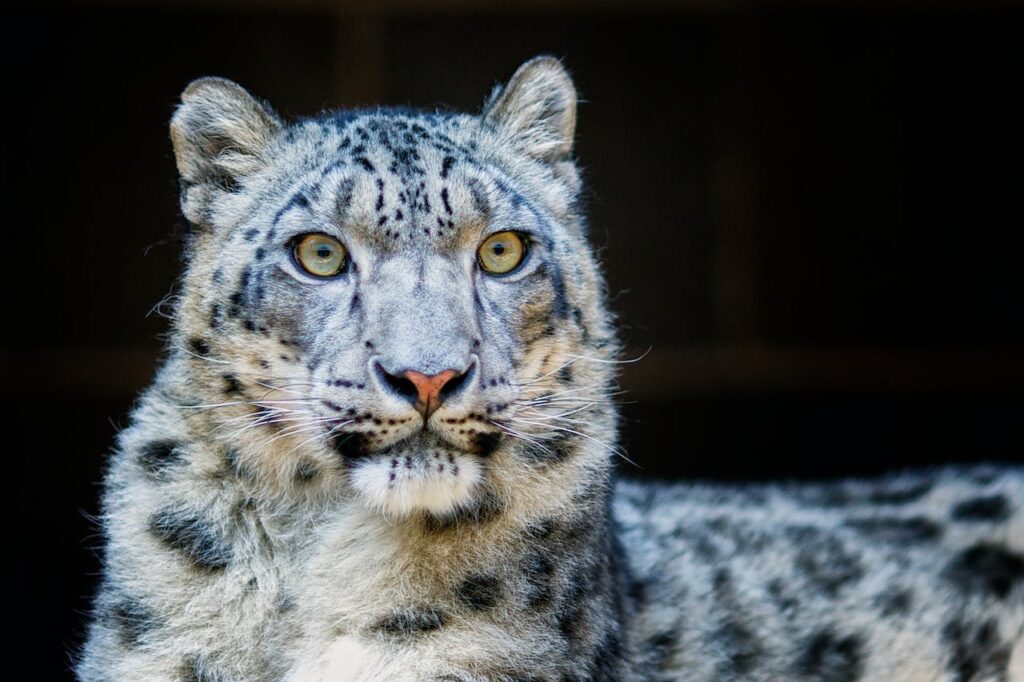
The Role of International Agreements and Partnerships
- Cross-border Conservation: The Amur leopard’s range extends beyond national boundaries, necessitating collaboration between countries like Russia, China, and North Korea. Also joint conservation agreements and shared data are essential for the holistic protection of this species.
- International Funding: Recognizing the global significance of conserving the rarest wild cat, several international organizations and governments provide funding and expertise, ensuring that local efforts are adequately supported.
Fact Source: Leopard-Tiger Alliance (LTA). “Symbiotic conservation: Protecting the big cats of the East.” LTA, 2022.
Frequently Asked Questions: Facts About Amur Leopards
How many Amur leopards are left in the wild?
The exact number of Amur leopards in the wild is difficult to pinpoint due to their elusive nature and vast territories. However, as of 2022, estimates suggest there are approximately 100 individuals. Making them one of the rarest big cats in the world.
What distinguishes the Amur leopard from other leopard subspecies?
The Amur leopard is adapted to the cold climate of the Russian Far East and northeastern China. It possesses a thicker fur coat, which can be up to 7.5 cm long in winter months, and has longer legs to navigate deep snow. Additionally, their rosettes (or spots) are larger and more widely spaced than those of other leopards.
Why is the Amur leopard critically endangered?
The primary threats to the Amur leopard include habitat loss due to logging, agricultural expansion, and infrastructure development. Poaching, both for their fur and body parts, as well as retaliatory killings due to human-leopard conflicts, further endanger their existence.
How can I contribute to Amur leopard conservation efforts?
You can support by donating to reputable conservation organizations like the World Wildlife Fund. Or the Land of the Leopard National Park. Raising awareness by sharing information about the Amur leopard and advocating for responsible wildlife tourism can also make a significant difference.
Do Amur leopards and Amur tigers share the same territory?
Yes, in some regions, especially within the Land of the Leopard National Park, Amur leopards and Amur tigers coexist. They have different hunting patterns and prey preferences, which allow them to share habitats without much conflict.
Facts About Amur Leopards Conclusion
The Amur leopard, a symbol of the pristine and untamed wilderness of the Russian Far East, stands on the brink of extinction.
Each fact about this majestic creature reveals a story not just of survival against the odds but also of the intricate balance of nature.
As the rarest wild cat faces challenges exacerbated by human interference. It also becomes a beacon of hope, highlighting the indomitable spirit of conservationists worldwide.
Collective efforts, transcending boundaries and disciplines, underscore the belief that the narrative can be shifted from loss to revival.
As we forge ahead, understanding, empathy, and action will be our guiding beacons in ensuring that the silent roars of the Amur leopard continue to echo through the dense forests of northeastern Asia.
Finally, please share this article Facts About Amur Leopards to help raise awareness of this beautiful animal. Thank you. Now read Interesting Facts About Bobcats


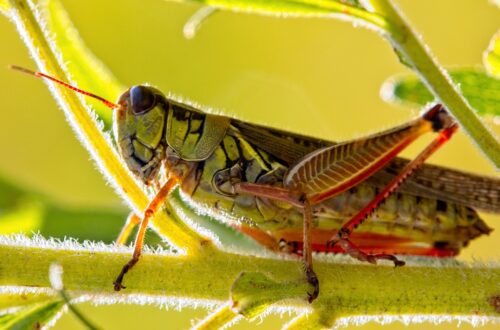


One Comment
Pingback: